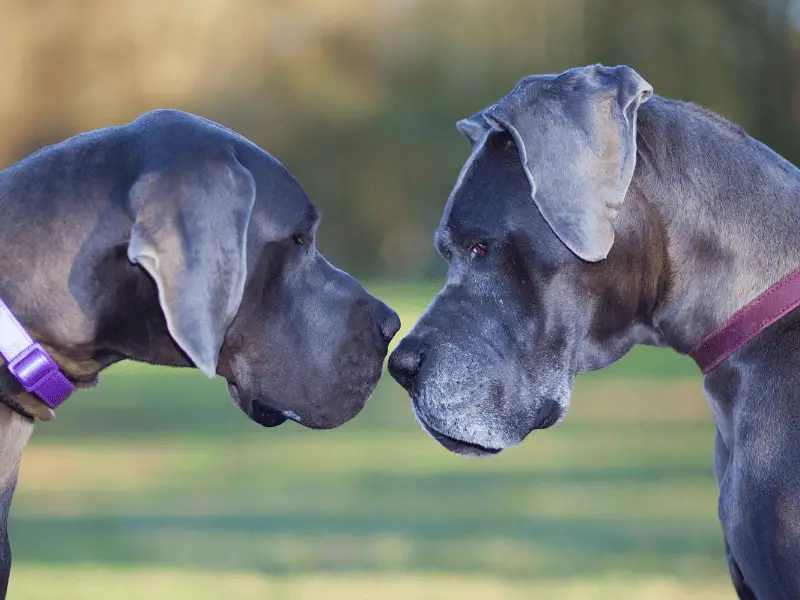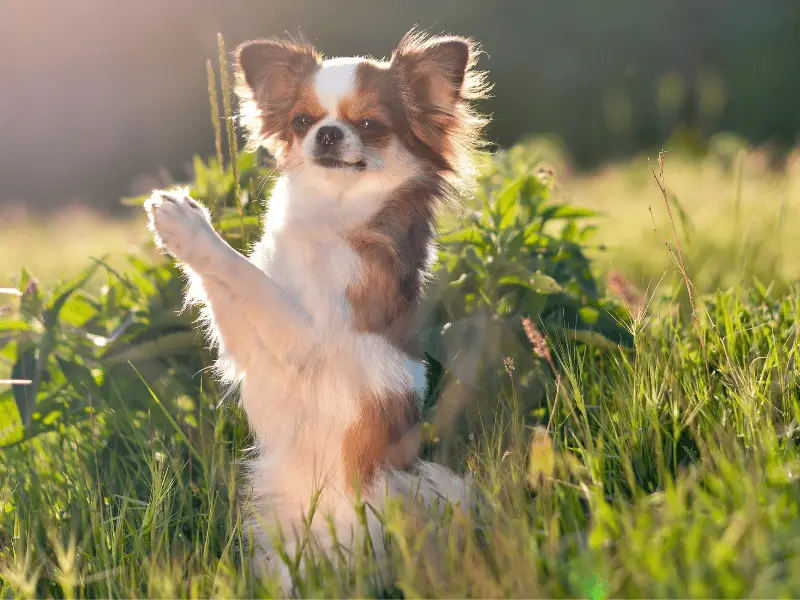Discover the world of breeding difficult dog breeds. Let’s look at which dog breeds are known to be difficult to breed due to genetics, health issues, and rareness.

Breeding dogs has been a popular practice for centuries. People have been breeding dogs to create traits such as loyalty, agility, and strength. However, dog breeding is not always easy.
Many factors can make it difficult to breed dogs successfully. In this article, we will explore the topic of dog breeding and discuss some of the breeds that are known to be difficult to breed.
Explanation of Dog Breeding
Dog breeding is the practice of mating two dogs with the goal of producing offspring with desirable characteristics. The characteristics that breeders look for can vary depending on the purpose of the breeding.
For example, a breeder may want to produce puppies with certain physical traits for showing in dog shows or specific personality traits for service or therapy work. Many different methods are used in dog breeding, including natural mating and artificial insemination.
Natural mating involves allowing two adult dogs to mate naturally without human intervention. Artificial insemination involves collecting sperm from a male dog and manually inseminating a female dog using a syringe or other medical device.
Brief Overview of the Topic
In this article, we will focus on breeds known to be difficult to breed due to various factors such as genetics and health issues. We will discuss how these factors impact successful breeding and explore techniques used by breeders to overcome them.
We want to inform readers about the challenges of responsible breeding and show how breeders can prioritize animal welfare over profit.
Factors that make dog breeding difficult
Breeding dogs can be a challenging task, as there are various factors that can affect the success of the process. Some of these factors include genetics, age, and health of the dogs, as well as breeding regulations. To achieve a successful breeding outcome, breeders must have an in-depth understanding of these factors and how they affect the overall process.
Genetics and hereditary diseases
One of the most significant factors that can affect dog breeding is genetics. Genetic makeup determines a wide range of physical and behavioral characteristics in dogs, making it essential to consider when choosing to breed two dogs together.
For instance, if one parent carries genes for a particular hereditary disease, there is a high likelihood that their puppies will inherit this trait.
Therefore, before mating two dogs, it’s vital to conduct genetic testing to identify any potential risks. This testing helps breeders avoid pairing two dogs with specific gene mutations that could result in hereditary diseases in their offspring.
Age and Health of the Dogs
The age and health status of male and female breeding dogs also play significant roles in successful reproduction outcomes.
Female dogs are at their prime reproductive age, between one to six years old. After six years old, fertility declines rapidly due to aging ovaries.
Male dogs’ fertility also decreases with age due to decreased sperm quality or quantity or underlying health conditions such as infections affecting testicular function. It’s therefore crucial for breeders only to select healthy young adult animals for breeding purposes.
Breeding restrictions and regulations
Breeding restrictions implemented by various bodies such as animal welfare organizations or government authorities also play an essential role in dog breeding processes.
These regulations aim at reducing unethical breeding practices such as puppy mills or overbreeding. For instance, some countries require breeders to obtain permits before breeding or impose limits on the number of litters allowed per year.
Also, some breeds are subject to specific laws regulating their breeding, such as those considered dangerous.
Therefore, before embarking on dog breeding processes, it’s essential to familiarize oneself with the relevant regulations and guidelines governing the procedure in your locality.
Difficult Breeds to Breed
Breeding dogs is a complicated and difficult process requiring time, effort, and resources. While many breeds can breed without complications, certain breeds have a higher risk of health problems during pregnancy and delivery or require more specialized care.
These include brachycephalic breeds like Bulldogs and Pugs, large breeds like Great Danes and Mastiffs, as well as rare breeds such as Azawakh and Thai Ridgebacks.
Brachycephalic Breeds
Brachycephalic breeds are dogs with short snouts and flat faces. While these features give them their distinctive look, they can also make breeding more challenging.
Brachycephalic dogs are prone to health issues related to their facial structure. They may develop breathing problems that can worsen during pregnancy due to the increased demands on their respiratory system.
Additionally, these dogs often have difficulty giving birth naturally due to the shape of their heads. Breeding brachycephalic dogs requires special attention from breeders to minimize risks for both the mother and puppies.
Breeders may need to use artificial insemination or schedule cesarean sections if natural delivery is not possible. They must also carefully monitor the mother’s health throughout the pregnancy and after delivery to ensure she does not experience any complications.
Large Breeds
Large dog breeds like Great Danes and Mastiffs present unique challenges for breeders. These dogs require more food than smaller breeds, which means that breeding them can be expensive. In addition to this financial burden, large female dogs also pose a risk of complications during pregnancy and delivery due to their size.
Breeders must carefully select mates for these types of dogs based on genetic compatibility as well as physical attributes like size. They must also carefully monitor pregnant females throughout gestation for any signs of complications and take measures to minimize risks during delivery.
Rare Breeds
Rare dog breeds like Azawakh and Thai Ridgebacks can be difficult to breed due to limited genetic diversity. These dogs have a smaller gene pool than more popular breeds, which means that finding suitable mates can be challenging. Additionally, some rare breeds are not recognized by major kennel clubs, which can make it difficult for breeders to find homes for their puppies.
Breeders of rare breeds must carefully select mates to minimize the risk of inbreeding while also working to promote awareness and recognition of the breed among potential owners.
They may need to travel long distances to find suitable mates or work with other breeders to expand the gene pool through careful breeding programs.
Techniques used to overcome difficulties in breeding
Breeding dogs can be challenging, especially when dealing with breeds that are known to have complications during pregnancy and delivery.
Fortunately, there are several techniques that breeders can use to overcome these difficulties and produce healthy litters. These techniques include artificial insemination, embryo transfer, and genetic testing for hereditary diseases.
Artificial insemination
Artificial insemination (AI) is a widely used technique in dog breeding that involves depositing semen into the female dog’s reproductive tract without natural mating.
AI is particularly useful for breeds with physical limitations or behavioral issues preventing them from naturally mating. It also allows breeders to use semen from high-quality males who may not be available for natural breeding.
There are two types of Artificial insemination: fresh and frozen. Fresh AI involves collecting semen directly from a male dog and depositing it into a female dog within two hours of collection.
Frozen AI, on the other hand, involves collecting semen from a male dog and freezing it for later use. Frozen sperm can be stored for years and can be transported across long distances without losing their fertility.
Embryo transfer
Embryo transfer (ET) is another technique used in dog breeding that involves removing embryos from one female dog and transferring them to another female’s uterus who will carry them until birth.
Embryo transfer is useful when a female dog cannot carry her own litter due to health problems or if the breeder wants to maximize the number of litters produced by a valuable female. The process of ET starts by stimulating multiple females’ ovaries simultaneously through hormone therapy.
Once eggs are released, they are fertilized with semen using artificial insemination techniques. After five days post-fertilization, embryos are removed surgically under anesthesia before being transferred to another recipient surrogate mother who will carry them till birth.
Genetic testing for hereditary diseases
Genetic testing helps breeders to identify and eliminate genetic disorders from their breeding programs. The genetic test results inform breeders about the probability of the offspring inheriting certain genetic diseases, allowing them to make informed breeding decisions. By avoiding breeding dogs with genetic defects, breeders can reduce the incidence of inherited diseases in their litters.
Several types of tests are available for detecting different genetic disorders in dogs, including DNA tests, blood tests, and physical examinations. An accurate diagnosis of a dog’s health status allows breeders to make informed decisions when selecting suitable mates for breeding.
Genetic testing is especially important when dealing with breeds prone to hereditary diseases like hip dysplasia or progressive retinal atrophy. Overcoming difficulties in dog breeding requires the use of advanced techniques such as artificial insemination and embryo transfer.
These techniques offer solutions for problems that arise due to physical limitations or health issues from certain breeds. Additionally, genetic testing plays an essential role in maintaining healthy breeding practices and minimizing inherited defects that may negatively impact future generations of dogs.
Final Thoughts on Difficult Dog Breeds
Dog breeding can be difficult, but certain breeds pose challenges. Factors such as genetics and hereditary diseases, age and health of the dogs, and breeding restrictions and regulations can all make dog breeding difficult.
Brachycephalic breeds like Bulldogs and Pugs face health issues related to their flat faces, making giving birth naturally very challenging.
Large breeds like Great Danes and Mastiffs are at risk for complications during pregnancy and delivery due to their size, while rare breeds like Azawakh and Thai Ridgeback have a limited gene pool which makes finding suitable mates difficult.
Despite the challenges, there are techniques that breeders can use to overcome difficulties in breeding, such as artificial insemination, embryo transfer, or genetic testing for hereditary diseases. These methods have helped improve the success rates of dog breeding while minimizing potential risks to the mother or offspring.
Final Thoughts on the Topic
While dog breeding may be challenging at times, it is important for breeders to prioritize the health and well-being of their animals above all else.
It is essential that breeders educate themselves on best practices for responsible breeding in order to minimize any negative impacts on the animals involved.
It is also important to acknowledge that not every dog is meant to be bred; spaying/neutering should be considered as an option in order to prevent overbreeding or accidental litters.
Overall, while certain breeds may present unique obstacles when it comes to breeding, with proper care and attention from skilled breeders, these challenges can be overcome successfully.
As such, we should continue supporting responsible breeder practices in order to help maintain healthy genetic lines for future generations of dogs.


